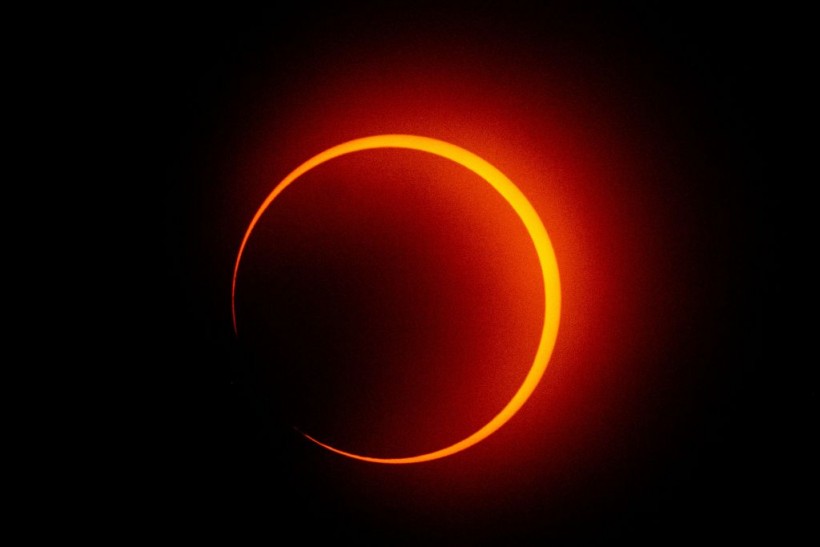Both amateur and professional astronomers are buzzing with anticipation for the upcoming total solar eclipse over North America on April 8. Moreover, the Sun is currently nearing the peak of its 11-year solar cycle. During the eclipse's totality, when the sun is fully obscured, there's a high chance of witnessing colossal towers of explosive plasma erupting from its surface.

(Photo : LUIS ACOSTA/AFP via Getty Images)
Solar Activity During Total Eclipse
On April 8, those in the path of totality will experience a brief period of darkness, known as totality, when it's safe to view the sun directly. During that time, the Sun's corona may reveal dark-pink towers and loops of electrically charged plasma, as observed during the last total solar eclipse in Australia in 2023.
These prominences are expected to be visible during the upcoming eclipse in North America due to the Sun nearing the peak of its 11-year solar cycle.
Solar physicist Ryan French from the National Solar Observatory in Boulder, Colorado, discussed the possibility of witnessing a coronal mass ejection (CME) during the total solar eclipse. He explained that a CME might appear as a twisted, spiral-like structure high in the sun's atmosphere, offering a rare spectacle for observers.
These massive ejections of magnetic field and plasma move swiftly but can seem stationary for several hours, allowing different stages of the eruption to be observed from various locations.
On the other, French noted that solar flares, which are powerful bursts of energy emitted from the sun's surface, are unlikely to be visible during totality. Solar flares typically last only a few minutes and are situated lower in the sun's atmosphere, making them less likely to be observed during the eclipse's brief period of darkness.
He also mentioned the anticipation surrounding prominences, and eruptions of plasma from the Sun's surface, during the total solar eclipse. He noted that prominences, which come in various sizes, are more common during periods of high solar activity.
While observers hope to witness "giant eruptive" prominences detached from the sun's surface and floating freely in the corona, the French acknowledged that even stationary prominences would offer a captivating sight during the eclipse, albeit on a smaller scale.
Reasons Why 2024 Total Solar Eclipse Is the Best in Centures
North America anticipates an extraordinary total solar eclipse, beckoning millions across Mexico, the U.S., and Canada to experience totality. Some speculate it may be the most remarkable eclipse in centuries, with a lasting impact.
Aside from the anticipated arrival of the devil's comet and solar activity during the eclipse, this year's celestial event is the best as it will be the longest total solar eclipse to be ever witnessed in the US with an estimated duration of 4 minutes and 28 seconds as the moon's shadow accelerates and elongates on its trajectory from southwest to northeast.
Also, the prolonged totality on April 8 promises a deeper darkness compared to the twilight-like glow of the 2017 eclipse, with a magnitude of 1.05 and a wider path revealing both Venus and Jupiter against the darkened sky.
Furthermore, the path of totality for the April 8 eclipse spans parts of 15 U.S. states, northern Mexico, and Canada, reaching approximately 40 million people, a significant increase from the 2017 eclipse's coverage.
Lastly, approximately a quarter of those witnessing totality will do so from urban areas, including major cities like Mazatlán, Torreón, Dallas-Fort Worth-Arlington, Austin, Little Rock, Indianapolis, Cleveland, Buffalo, Rochester, Hamilton, Niagara, St. Catharines, Kingston, and Montreal, totaling around 10 million individuals.
RELATED ARTICLE: From 'Ring of Fire' to Total Solar Eclipse: What To Expect From the Upcoming Celestial Meeting Next Year
Check out more news and information on Solar Eclipse in Science Times.














